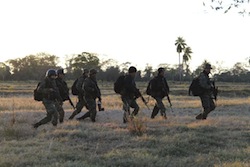New homicide figures from the first six months of the year show that the national murder rate in Paraguay has dropped, but homicide figures remain high along the country’s volatile border with Brazil.
Data released by Paraguay’s Ministry of the Interior rank the country as the third least violent in South America with a murder rate of 7.9 per 100,000 inhabitants, behind Chile and Argentina. The numbers indicate a 14 percent drop in the homicide rate for the first six months of 2015 over the homicide rate for the first six months in 2014.
SEE ALSO: Coverage of Homicides
The figures show high concentrations of violence in the states of Amambay and Alto Parana, with those provinces registering 50 and 31 homicides respectively. Both of these states are major border crossings between Paraguay and Brazil. Amambay in particular is one of the most dangerous border regions in Latin America, registering a murder rate of 66.7 per 100,000 inhabitants in 2014.
InSight Crime Analysis
This latest government data indicates that the security climate in Paraguay as a whole may have dodged the negative effects of a rising insurgency and a growing drug trade, but concentrated violence in the border regions suggests that the security crisis in those areas may be as acute as ever.
InSight Crime has previously suggested that violence in Paraguay could rise as the EPP grows in strength. The EPP is a relatively small insurgency when compared to similar groups found elsewhere in South America, but the organization’s foothold in the international drug trade is growing, and it has been able to carry out several high-profile attacks that have thrown Paraguayan security forces into disarray. The formation of new illegal armed groups, beyond the EPP, also compounds fears that Paraguay’s security situation might be deteriorating.
SEE ALSO: Coverage of the EPP
Paraguay’s role as South America’s principal marijuana producer and its importance as a stop-over point along the cocaine air bridge connecting Bolivia and Peru with Brazil are both factors that have led to the development of extensive drug trafficking networks in the country, the presence of which represents an additional potential source of violence.
Still, official statistics say the country’s homicide rate is dropping.

